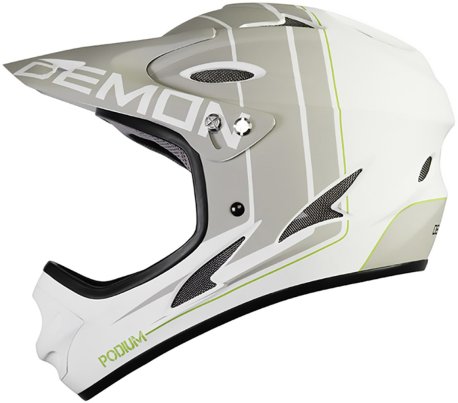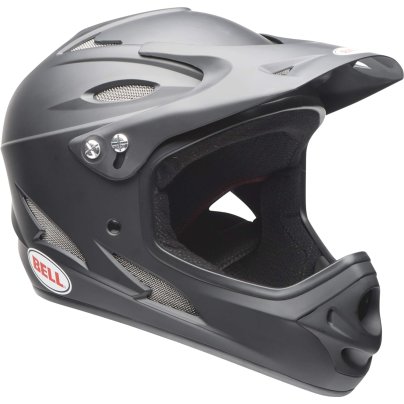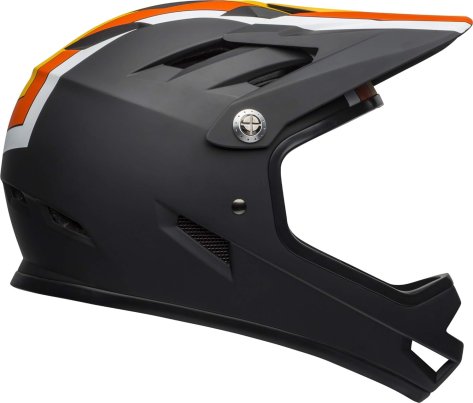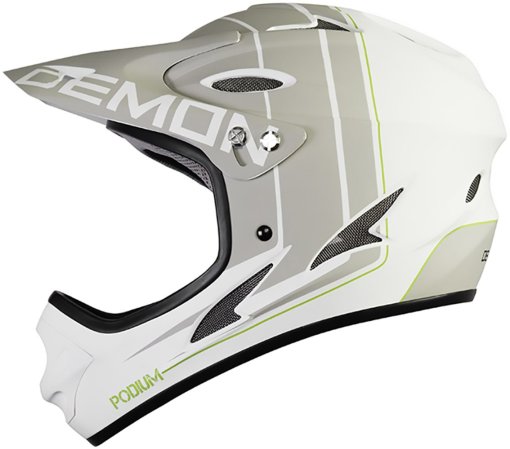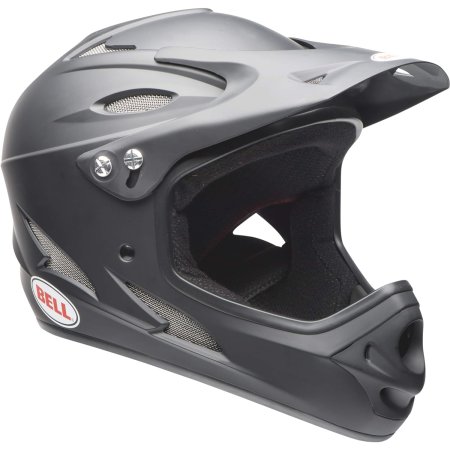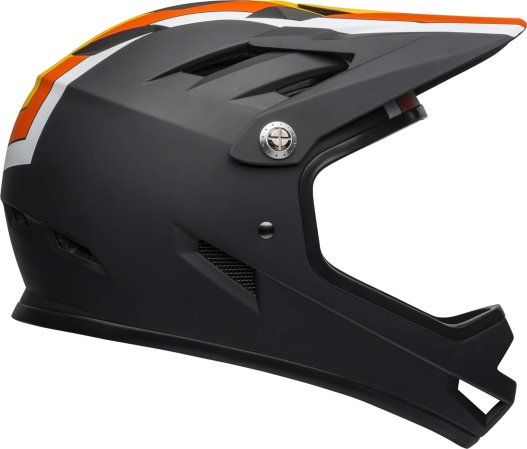We may earn revenue from the products available on this page and participate in affiliate programs. Learn more ›
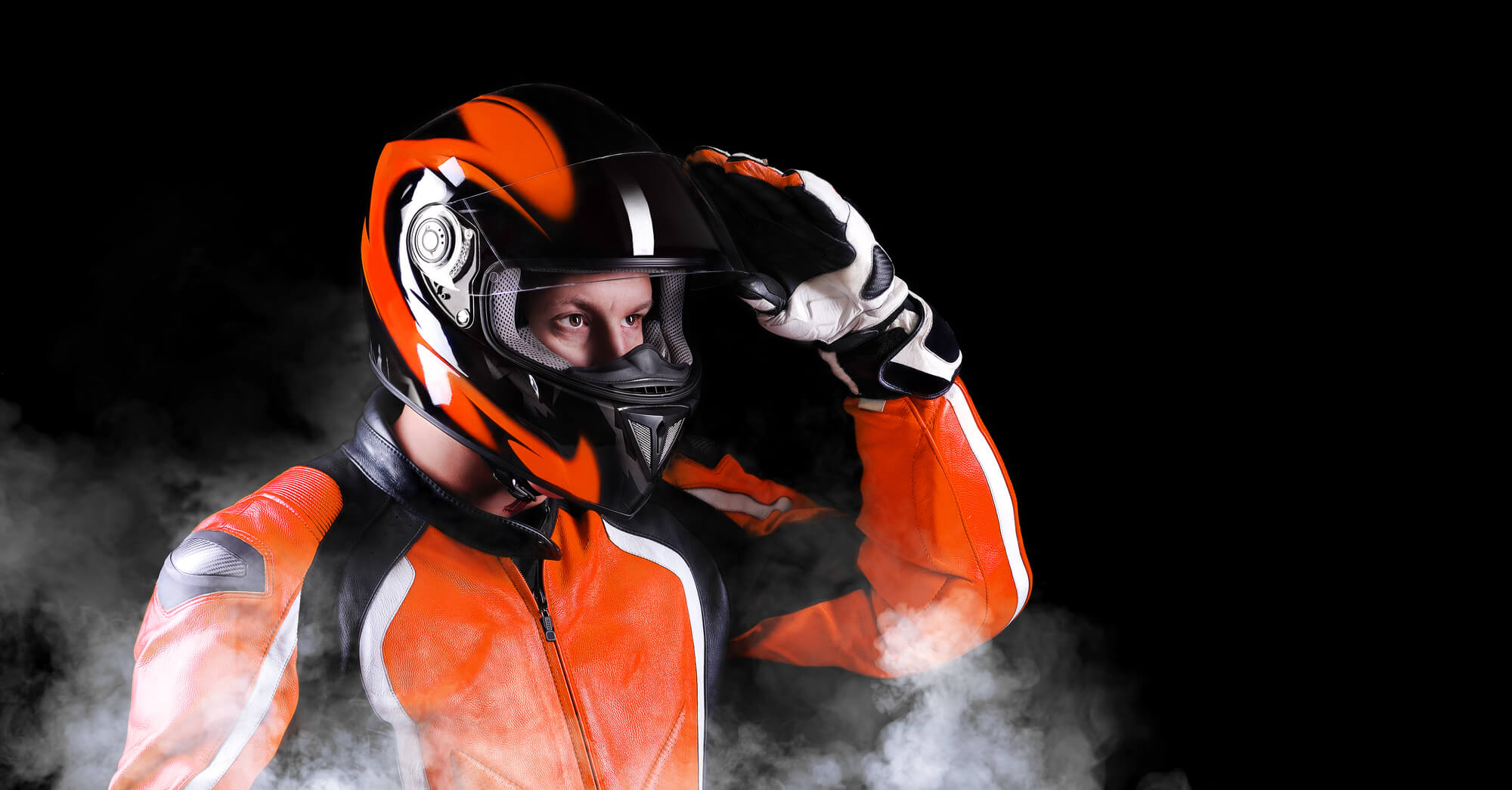
If you like to ride off-road, there’s nothing better than hurtling full speed down a rocky hillside. A quality helmet is a sensible idea wherever you’re cycling, and bouncing rocks and uneven terrain might have you looking for something a little more rugged. Full-face helmets surround your entire head and provide additional protection to your neck and other areas that a standard helmet won’t cover. They often include visors and wider chin straps to guard against contact with flying debris and interior padding for maximum cushioning in the event of a collision. These are our top picks for the best full-face mountain bike helmets.
Summary List
- Best Overall: Demon United Podium Helmet
- Best Value: Bell Servo Adult Helmet
- Honorable Mention: Bell Sanction Adult Full Face Bike Helmet
Types of Full-Face Mountain Bike Helmets
Enduro Mountain Bike Helmets
These protect your jaw, face, and entire head. They are perfect for downhill riding or airborne tricks. They shield you against severe injury by limiting the rotations your neck and head undergo during a crash. Enduro full-face mountain bike helmets are designed to minimize the bumps that occur after a fall. Their cushioning lessens the likelihood of serious injury or brain trauma.
Convertible Mountain Bike Helmets
Convertible helmets are adaptable and can transform from full face to half face and vice versa. They come with a removable chin bar that can be attached or detached. When you wear the half-shell helmet, you can ride comfortably on trails with moderate complexity. You can also ride aggressively downhill.
Best Full-Face Mountain Bike Helmets: Reviews & Recommendations
Best Overall
Demon United Podium Helmet
Best Value
Bell Servo Adult Helmet
Honorable Mention
Bell Sanction Adult Full Face Bike Helmet
Our Verdict on the Best Full-Face Mountain Bike Helmets
Coming in a range of designs and weighing in at just over 2 pounds, the lightweight Demon United Podium Helmet is our best full-face MTB helmet overall.
Our best value pick is the slightly heavier, super-padded Bell Servo Adult Helmet.
Benefits of Full-Face Mountain Bike Helmets
- Protection from injury. If you like to ride at high speeds, a full face bike helmet can offer you the protection you need – especially when you’re riding on new trails. It is impact-resistant and perfect for riders who want to avoid injury. The helmet protects your head from large rocks, tree trunks, and hard tree roots, preventing scratches, bruises, and severe injury.
- Ideal for difficult trails. What makes mountain biking so exciting is the ability to explore challenging trails. However, the numerous bumps, twists, and turns can result in multiple, and sometimes severe crashes. The best full face mountain bike helmet allows you to ride on difficult terrain with peace of mind.
- Perfect for bike tricks. Mountain bikers who love riding downhill, dirt jumping, and doing bike tricks are highly susceptible to head and face injuries. Full-face bike helmets have extra padding around the head and face to make mountain biking safer. You won’t have to worry about loose dirt or gravel, causing you to lose your balance.
Key Features
Fit
Fit is a very important feature when choosing full-face helmets because it dictates safety. Head shape usually varies from one rider to another, so the best way to find out which helmet fits perfectly is to try out several. A good full-face mountain bike helmet should fit comfortably and not rattle as you ride on harsh terrain.
Breathability
Mountain bike helmets now feature air channels, vents, and liners to avoid trapping heat and air. The best ones have padding made from open-cell foam and are covered in a soft, absorbent fabric. These features keep the helmet in one place and enhance comfort by boosting air circulation. It’s very important to have airflow when wearing a helmet.
Adjustability
To find a helmet that fits snugly, look for this crucial feature: adjustability. Adjustable helmets are the best because they can fit numerous head shapes and sizes. Dials located at the backs of the helmets ensure easy and swift adjustment. This feature goes a long way toward helping you to stay comfortable on long rides and across diverse terrains.
Full-Face Mountain Bike Helmet Pricing
- Under $100: These are budget-friendly, low-profile helmets with a limited size range. They have little ventilation and are less breathable than more expensive helmets. They may also be heavier and have fixed visors.
- $100-$200: These helmets are comfortable with removable, washable liners. Their visors are detachable and the adjustable buckles make for a better fit. They are designed for protection against high-impact falls.
- $200 and up: These helmets are light, strong, and durable. They remain cool in hot weather and come in a wide range of sizes. They have numerous safety features and may have removable chin bars and adjustable visors.
Other Considerations
- Visor: The best full-face mountain bike helmet has a built-in visor that shields you from the elements as you ride. The visor keeps the sun’s rays off your eyes, helping you to have clear vision. Before buying a helmet, check how adjustable its visor is and also its attachment style. A visor that can be easily adjusted by hand is best.
- Chin Bar: There are two major chin bar (chin guard) designs on full-face bike helmets: regular and convertible. Regular chin bars are usually built into the helmets, while convertible chin bars are detachable. Convertible chin bars are ideal for riders with mixed riding styles who change terrains often. For enhanced comfort, the chin guard should be positioned a good distance away from your mouth.
- Accessory Mount: Whether you want to mount a camera, a light, or any other accessory, a helmet mount can make the job easier. A camera mount can allow you to create awesome videos so you can increase your social media popularity. A bike helmet light improves visibility, enabling you to ride later at night.
Tips
- There’s no point wearing a helmet if it’s loose or fits poorly. Make sure it’s square on your head, not tipped back or forward, and make sure the chin strap is adjusted so it sits firmly against your throat.
- Excessive heat can affect the integrity of your helmet, so be careful about exposing it to direct sunlight for long periods.
- Certification from the American Society for Testing and Materials (ASTM) or the Snell Foundation indicates a very high-quality helmet, but all helmets should at the very minimum be approved by the U.S. Consumer Product’s Safety Commission (CPSC).
FAQs
A: Make sure that it’s comfortable yet secure. Use a measuring tape to find the circumference of the widest part of your head (usually just above the eyebrows) and compare that against the size chart provided by the manufacturer.
A: While it’s a legal requirement across most states for children, adults are not mandated to wear a helmet while using a bicycle. However, accidents can happen no matter the perceived risk or the distance involved, and a good helmet can make a big difference. We recommend that adults and children alike wear a suitable helmet on every ride.
A: Both offer decent protection against impact and collision, and in a lot of cases they will look identical. A road bike helmet might be lighter and more aerodynamic for improved speed, whereas an MTB helmet is likely to include extra protective features, such as a visor and wider chin strap to deal with bouncy off-road terrain.
